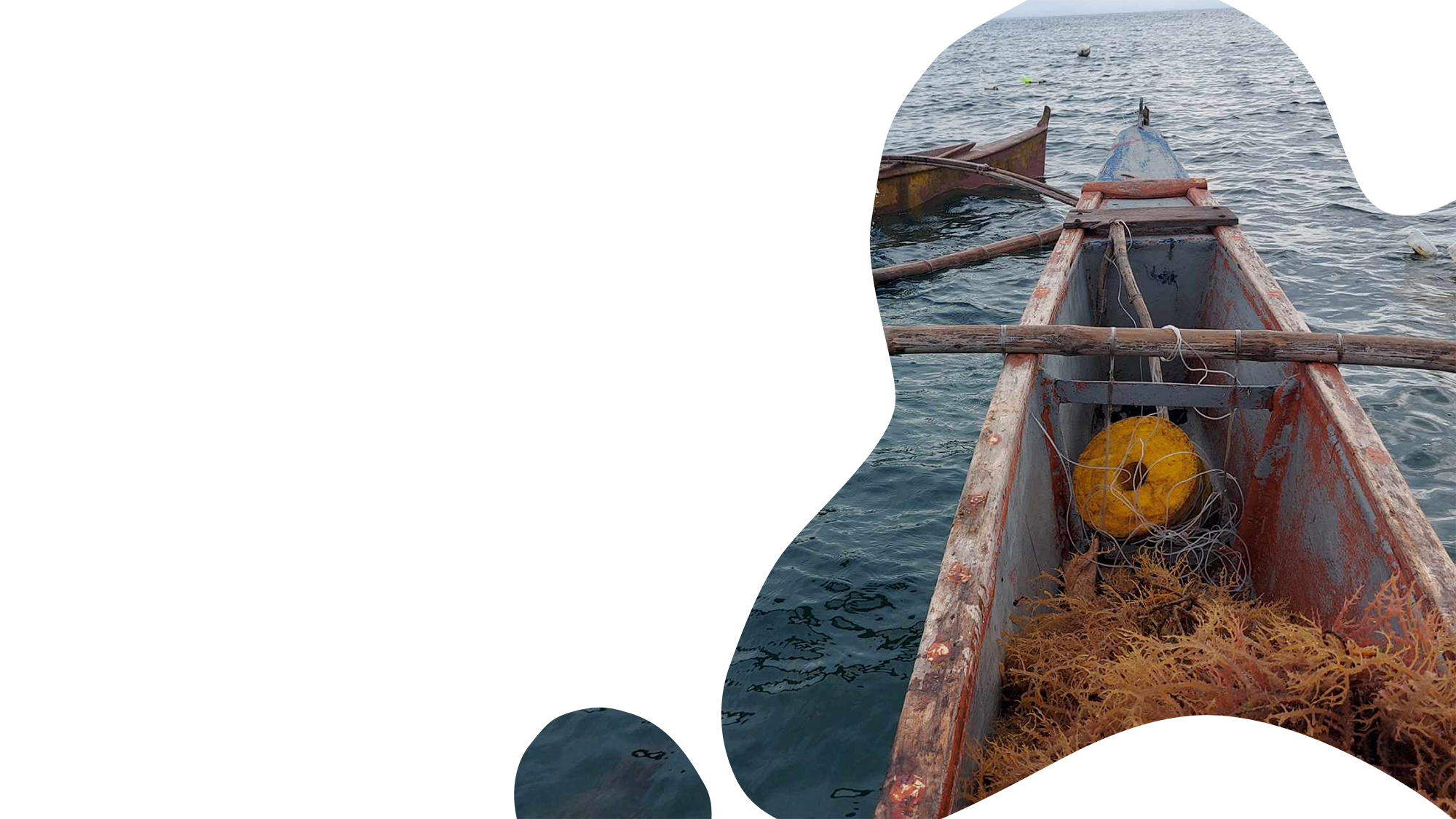
WE ARE BUILDING THE WORLD’S LARGEST SUPPLY OF REGENERATIVE SEAWEED, BENEFITING THE 4Cs OF COMMUNITY, COMMERCE, CONSERVATION AND CLIMATE.
Coast 4C is a dependable supplier of quality, responsibly sourced seaweed, solving the supply challenges for responsible global brands across multiple applications. We help farmers become a regenerative and economically, as well as, environmentally sustainable force for their community while we help buyers find great seaweed at a competitive price.
Supported by
FOR FARMERS
We offer unique benefits, education, finance and insurance opportunities for farmers, providing 286 farmers with our regenerative farm input packages by the end of 2024. Our specifically designed GROW program puts the farmers first, for everyone’s benefit.
FOR BUYERS
Our close cooperation with farmers enables us to keep a steady tally on supply quantity, scheduling, quality, species availability and logistics. Furthermore, the growing strategies taught in our GROW programme enables our farmers to deliver superior seaweed at a competitive price point with no doubts about provenance or impact.
FOR OCEAN PROTECTORS
We offer a sustainable solution to ocean protection and community empowerment. Through partnerships with local governments and NGOs, we are able to expand on our community-based marine protected areas (iMPAs). Our established model with farmers helps maintain the services and protection the iMPAs provide.
“Smallholders are the only proven route to scale. They have achieved this based solely on their local ecological knowledge and without any really meaningful investment in agtech. With a multidisciplinary approach and deep roots into these communities and understanding of their challenges, Coast 4C is beginning to crack the code on how we can augment their powerful knowhow.”
Nicholas Hill, Founder and CEO, Coast4C
OUR IMPACT
+500 families
targeted to receive regenerative GROW input packages by the end of 2025
5868 hectares
of the ocean protected in eight community-based marine protected areas
1200% growth
year-on-year in seaweed traded (705t dried seaweed in 2024 sold YTD)
WE ARE LOOKING TO DEVELOP 500,000 SEAWEED FARMING FAMILIES ALL OVER SOUTH EAST ASIA.
Over 85% of global eucheumatoids are produced by small-scale fishers in the Philippines and Indonesia living at or below the poverty line and using rudimentary seaweed farming practices that are key factors in seaweed delivering on significant social and ecological outcomes.
This is a key resource for some of the poorest people on the planet and in the shallow water coastal zones where it is needed most to combat the effects of ocean acidification and eutrophication. We help these communities thrive again by enabling them to farm better, get the prices they deserve and build a sustainable business both for nature and bottom line that they can hand to their children.
RECOGNISED BY

OUR STORY
Coast 4C is more than a company; it is a testament to the power of community-led change and the belief that together, we can create a better future for our oceans and the people who depend on them.
What started as a means to improve the socio-economic and environmental conditions of the seaweed farmer communities in South East Asia turned into the profound purpose of establishing seaweed farming as a pillar of economic resilience.
OUR WORK HAS BEEN FEATURED IN
Click the logo to read the article

Our services change communities for the better, for impact and for profit. Invest in lasting impact.
Coast 4C is currently raising an investment round for selected investors.
By investing in Coast 4C, investors are not just funding a business, but enabling a transformative model that drives lasting change for the ocean and coastal communities. Your investment supports the transition to sustainable, regenerative seaweed farming, bolsters local livelihoods, restores marine ecosystems, and creates a stable, legitimate supply of quality seaweed—ensuring long-term positive impacts for both people, planet and profits.
Please contact us through the form below if you think you are a fit and we will contact you with all necessary material.
OUR PARTNERS

THERE ARE MANY WAYS TO WORK WITH US.
Talk to us and learn more about how we create sustainable and restorative seaweed economies all while restoring and protecting marine areas, championing the families that feed communities, building economic resilience and giving them a way forward to continue their way of life.



































